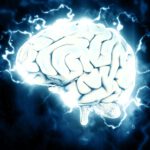As Kepler telescope continues to discover more and more exoplanets, its findings offer some interesting insights into the other solar systems. Researchers have noticed something strange. In most of the other solar systems, planets larger than the Earth orbit closer to their parent stars than Mercury orbits our Sun. In our system, there lies little between Mercury and the Sun – only a little debris and probably some asteroids.
The destruction of solar system 1.0
But it may not always have been the same, according to a new study published in the Proceedings of the National Academy of Sciences. Astrophysicists from the California Institute of Technology and University of California-Santa Cruz said that Jupiter played a decisive role in the evolution of early solar system. Long before Mercury, Venus, Earth and Mars came into the inner solar system, there might have been an older generation of planets closely orbiting the Sun.
These previous super-Earths could have been destroyed by Jupiter. In the solar system 1.0, numerous planets several times bigger than the Earth occupied the region closest to the sun. Konstantin Batygin, the lead author of the study, said there were also “planetary building blocks” or planetesimals that formed in the first million years of the formation of the Sun.
Swept by the gravitation wake of its own build-up, Jupiter moved inward like a wrecking ball, which is a scenario described as the “Grand Tack.” It drifted towards the center of the solar system. Jupiter dragged all forms of smaller objects along, including asteroids and proto-planets. With so many celestial bodies in motion, there would have been a lot of collisions and crashes.
Jupiter reversed its course due to newly formed Saturn
At the time, Jupiter had drifted as close to the Sun as Mars is today before reversing its course. But by then most of the nascent super-Earths were smashed into pieces. The resulting debris spiraled into the Sun due to the strong “headwind” from the dense disk of gas still swirling around the Sun. Then a second generation of planets formed from the material that was left behind. The new inner planets Mercury, Venus, Earth and Mars have much thinner atmospheres and are much less massive than the first set of super-Earths may have been, said researchers.
Why did Jupiter reverse its course? That’s because of Saturn, which was formed a bit later but had enough gravitation force to counteract Jupiter’s inward movement. This scenario explains why the inner solar system bears little resemblance to the other systems.











